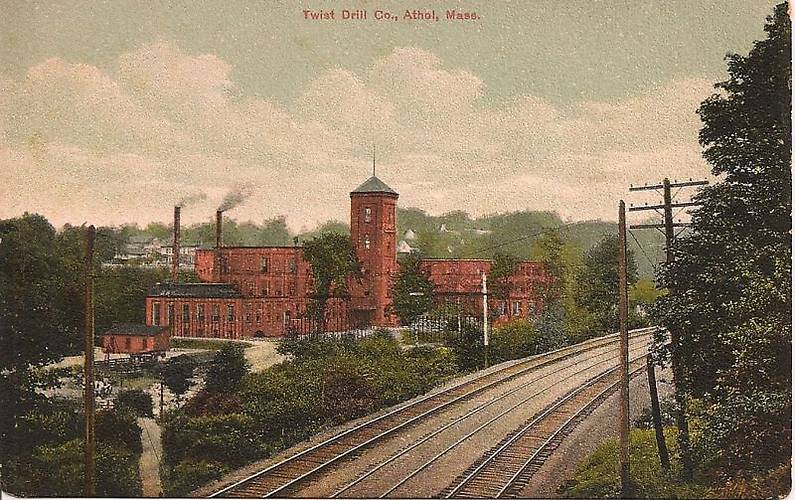
Shown is very typical construction for telegraph work here in New England or the Northeast for that matter... until the early teens. These earlier-threaded lines had 28 or 30-inch long crossarm braces having pins with wooden cob pins popularly mounted upon six-pin crossarms. The latter (I believe) mostly had pole-through-bolts. Of note... along this same section of major trackage between Boston and Albany, NY good friend Jeff Kaminski has found rotted examples of double-lagged crossarms in the ground evident from this very same line not too far from where this photo was taken. Next time I speak with him I will ask for more details, such as if crossarm braces were used, etc. The line you see likely was built in the later 1880s or early 1890s and used CREBs (CRown Embossed Brookfields) along with iron wire. The preceeding line likely was built around 1870 (replacing the threadless one) with two-or-four pin crossarms from the rare images I have seen. Those had single-petticoat insulators such as the CD 131, 126 and 127. Not being of the then-standard (c1884) double-petticoat Western Union Standard, I am certain they were tossed upon their rebuilding of that time. Like a lot of Western Union lines here in the northeast it is apparent those old iron-wire, 6-pin pole lines were superceded with ones utilizing hard-drawn copper wire strung upon 10-pin crossarms. The latter utilized CD 145 B-beehives, CD 152s (Hemingray and Brookfield). Added circuits employed Hemingray-42s and the like in the 1920s. I fondly recall many of the CD 145 design atop Western Union pole lines with those "bell-shaped" CD 154s down below. Back to the rebuilding...the old iron wire was physically turning into brittle crap, not to mention the electrical line losses and resultant loss of quality via sending those dots-n-dashes. In addition there were a growing number of rotting poles unsafe to climb, ready to tilt over from about a human generation earlier. It is has been my opinion/obeservation that the latter upgraded lines (in the teens) utilized cedar poles and recycled CREB's and other undamaged, usable insulators, pins, braces and other metal hardware from the "predecessor" lines. It simply was not a throw-away society people lived in back then, so the line construction crews knew what was good to recycle. Some of this ancient stuff can still be found here and there although most of it is buried in the ground via natural vegetation and soil (given the approximately six-inches per century natural settlement into-the-ground rule that some of us prospectors sometimes observe). A lot of the hard drawn copper wire used upon this line and many others here in the Northeast and New England for telegraphic purposes was cut and removed in the 1960s. Thus plenty of crossarms with all the goodies were subsequently tossed onto the ground to rot forever as I recall around here as a kid back then. Joe +++++++++++++++++++++++ |